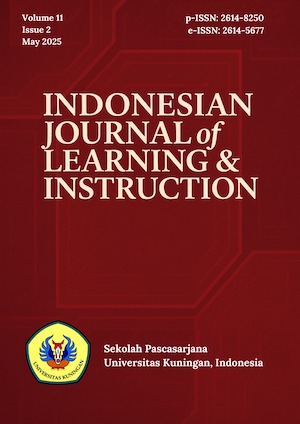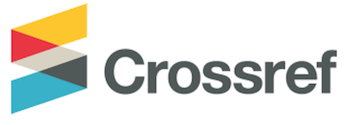Online learning for EFL students in Palestinian universities during corona pandemic: Advantages, challenges and solutions
Abstract
This study attempts to examine the perceptions of EFL students in Palestinian universities about online learning advantages, challenges, and solutions during Corona pandemic. Moreover, it aims to highlight the efficiency of online learning as an educational system which can be relied on to achieve goals of high educational institutions. The researchers investigated the current situation of online learning in Palestinian universities during the COVID-19 pandemic using a questionnaire. In the questionnaire, the participants were 191 students (161 females and 30 males), and all of the participants have tried the online learning experience during this pandemic. 33% of them took online courses before, while 67% did not. The questionnaire was posted on 6 English clubs’ websites of 6 Palestinian universities: Birzet University, An-Najah National University, Bethlehem University, Hebron University, Al-Quds University, and Palestine Ahliya University. The investigation was concerned in pointing out the challenges facing the students during their online courses, in addition to finding out solutions in terms of involving students in the assessment process. The findings confirmed the need to conduct changes and improvements regarding the implementation of e-learning in the educational process in order to help high ministries of education achieve more real success in spreading knowledge. The researchers concluded that there should be massive efforts in improving the technological infrastructure besides holding good training programs for both students and teachers.
References
Affouneh, S, Salha S, & Khlaif Z (2020). Designing Quality E-learning Environments for Emergency Remote Teaching in Coronavirus Crisis. Med Sci,11(2), pp.1-3
Al-Meneai, A. (2008). An Investigation of the Effect of Computer-assisted Writing Instruction on EFL Saudi Learners’ Ability. King Saud University. Retrieved from
http://repository.ksu.edu.sa/jspui/bitstream/123456789/19275/1/Thesis by Ahmed M. O. Al-Menei.pdf
Ananga P., & Biney, I. K. (2017). Comparing face-to-face and online teaching comparing face-to-face and online teaching. MIER Journal of Educational Studies, Trends & Practices, 7(2), pp.165-179.
Bacow, L., Bowen, W., Guthrie, K., Lack, K., & Long, M. (2012). Barriers to adoption of online learning systems in U.S. higher education. Ithaka S+R Consulting. Retrieved from https://sr.ithaka.org/wp-content/uploads/2015/08/barriers-to-adoption-of-onlinE-learning-systems-in-us-higher-education.pdf
Bao, W. (2020). COVID‐19 and online teaching in higher education: A case study of Peking University. Human Behavior and Emerging Technologies, 2(2), 113-115. https://doi.org/10.1002/hbe2.191
Barr, B., & Miller, S. (2013). Higher Education: The Online Teaching and Learning Experience. Retrieved from https://www.google.com/url?sa=t&source=web&rct=j&url=https://files.eric.ed.gov/fulltext/ED543912.pdf&ved=2ahUKEwiS3tKI2N3oAhUm-2EKHfNoCR8QFjABegQIAxAB&usg=AOvVaw10Sal8UOXPU8DFS3h782jT
Betts, K., & Heaston, A. (2014). Build it but will they teach? Strategies for increasing faculty participation and retention in online and blended education. Online Journal of Distance Learning Administration, 17(2). Retrieved from http://www.westga.edu/~distance/ojdla/summer172/betts_heaston172.html
Biswas P (2020). Worldwide Scenario of Unplanned Transition to E-learning in the Time of COVID-19 and Students’ Perception: A Review.
Bolliger, D., &Wasilik, O. (2009). Factors influencing faculty satisfaction with online teaching and learning in higher education. Distance Education, 30(1), 103-116. doi:10.1080/01587910902845949
Brandl, K. (2002). Integrating Internet-based reading materials into the foreign language curriculum: from teacher-to-student-centered approaches. Language Learning & Technology, 6(3), 87-107.
Davies, G. (2012a). Computer Assisted Language Learning: Where are we now and where are we going? Retrieved June 21, 2016, from http://www.camsoftpartners.co.uk/docs/UCALL_Keynote.htm
Davies, G. (2012b). Lessons from the past, lessons for the future: 20 years of CALL. Retrieved June 21, 2016, from http://www.camsoftpartners.co.uk/coegdd1.htm
Demuyakor, J. (2020). Coronavirus (COVID-19) and Online Learning in Higher Institutions of Education: A Survey of the Perceptions of Ghanaian International Students in China. Online Journal of Communication and Media Technologies, 10(3), e202018. https://doi.org/10.29333/ojcmt/8286
Dignan, L. (2020, March 22). Online learning gets its moment due to COVID-19 pandemic: Here’s how education will change. ZDNet. https://www.zdnet.com/article/onlinE-learning-gets-its-moment-due-to-covid-19-pandemic-heres-how-education-will-change/?fbclid=IwAR0p9l1haDMydjRm5W5nrV7uy2Ieks9DbUF300mr7RC0QsU_oFaVE6lrsk8
Donitsa-Schmidt, S., & Topaz, B. (2018). Massive open online courses as a knowledge base for teachers. Journal of Education for Teaching, 44(5), 608-620. https://doi.org/10.1080/02607476.2018.1516350
Farzi, R. (2016). Taming Translation Technology for L2 Writing: Documenting the Use of Free Online Translation Tools by ESL Students in a Writing Course. University of Ottawa. University of Ottawa.
Filius, R. M., Kleijn, R. A. M., Uijl, S. G., Prins, F. J., Rijen, H. V. M., & Grobbee, D. E. (2019). Audio peer feedback to promote deep learning in online education. Journal of Computer Assisted Learning, 35(5), 607-619. https://doi.org/10.1111/jcal.12363
Garcia, C., & Badia, A. (2017). Information problem-solving skills in small virtual groups and learning outcomes: IPS skills and learning outcomes. Journal of Computer Assisted Learning, 33(4), 382-392. https://doi.org/10.1111/jcal.12187
Kizilcec, R. F., Bailenson, J. N., & Gomez, C. J. (2015). The instructor's face in video instruction: Evidence from two large‐scale field studies. Journal of Educational Psychology, 107, 724– 730
Knibel, E. (2001). The Use and Effect of Distance Education in Healthcare: What Do We Know?. Bethesda, MD: Quality Assurance Project. Operations Research Issue Paper, 2(2). Retrieved from https://www.semanticscholar.org/paper/The-Use-and-Effect-of-Distance-Education-in-%3A-What-Knebel/cda9b3bd188a9541aed3e670ec8ba6a6f1516df7#citing-papers
Lee, L. (2002). Enhancing Learners’ Communication Skills through Synchronous Electronic Interaction and Task-Based Instruction. Foreign Language Annals, 35(1), 16-24.
https://doi.org/10.1111/j.1944-9720.2002.tb01829.x
Li, C. & Lalani, F. (2020). The COVID-19 pandemic has changed education forever. This is how. World economic forum. Retrieved from https://www.weforum.org/agenda/2020/04/coronavirus-education-global-covid19-online-digital-learning/
Li, C., & Lalani, F. (2020, April 29). The COVID-19 pandemic has changed education forever. This is how. Weforum. https://www.weforum.org/agenda/2020/04/coronavirus-education-global-covid19-online-digital-learning
Ludeman, R., Osfield, K., Hidalgo, E. I., Oste, D., & Wang, H. (2009). Student Affairs and Services in Higher Education: Global Foundations, Issues and Best Practices. United Nations Educational, Scientific and Cultural Organization, France. Retrieved from https://unesdoc.unesco.org/ark:/48223/pf0000183221
Market Insider. 2019 Global Edtech Investments Reach a Staggering $18.66 Billion. Markets Insider. Retrieved from .https://markets.businessinsider.com/news/stocks/2019-global-edtech-investments-reach-a-staggering-18-66-billion-1028800669?fbclid=iwar3cw1jzfzhigpm4wsslqcuuhuzitglc7psaqvbb6r3rzjis-gzysacsmb8
McQuiggan, C. (2012). Faculty development for online teaching as a catalyst for change.
Journal of Asynchronous Learning Networks, 16(2), 27-61. Retrieved from http://files.eric.ed.gov/fulltext/EJ971044.pdf
Moskal, P., Dziuban, C., & Hartman, J. (2013). Blended learning: A dangerous idea? The Internet and Higher Education, 18, 15–23.
Murphy, M. P. A. (2020). COVID-19 and emergency eLearning: Consequences of the securitization of higher education for post-pandemic pedagogy. Contemporary Security Policy, 1-14. https://doi.org/10.1080/13523260.2020.1761749
Online Education Market Study 2019 | World Market Projected to Reach $350 Billion by 2025, Dominated by the United States and China. (2019, December 17). Globe News Wire. https://www.globenewswire.com/news-release/2019/12/17/1961785/0/en/Online-Education-Market-Study-2019-World-Market-Projected-to-Reach-350-Billion-by-2025-Dominated-by-the-United-States-and-China.html?fbclid=IwAR0RQTQSP3vdUvEaIgTfrLu6dd7pdebu9RBI48iplL1TTrHRNEmWyAGOO2Y
Picciano, A. G. (2017). Theories and frameworks for online education: Seeking an integrated model. Online Learning Journal, 21(3). https://doi.org/10.24059/olj.v21i3.1225
Shlossberg, P., & Cunningham, C. (2016). Diversity, instructional research, and online education. Communication Education, 65(2), 229-232. https://doi.org/10.1080/03634523.2015.1098713
Shuchi, I. J., & Islam, A. B. M. (2016). Teachers' and Students' Attitudes towards L1 Use in EFL Classrooms in the Contexts of Bangladesh and Saudi Arabia. English Language Teaching, 9(12), 62-73. https://doi.org/10.5539/elt.v9n12p62
Sintema, E. J. (2020). Effect of COVID-19 on the Performance of Grade 12 Students: Implications for STEM Education. Eurasia Journal of Mathematics, Science and Technology Education, 16(7), em1851. https://doi.org/10.29333/ejmste/7893
Skulmowski, A., & Rey, G. D. (2020). Subjective cognitive load surveys lead to divergent results for interactive learning media. Human Behavior and Emerging Technologies, 2, 149–157.
Skulmowski, A, and Rey, G. D. (2020) "COVID‐19 as an accelerator for digitalization at a German university: Establishing hybrid campuses in times of crisis." Human Behavior and Emerging Technologies.
UNESCO. (2020). Global Education Coalition-290-million students out school due-COVID-19. In Unesco. https://en.unesco.org/news/290-million-students-out-school-due-covid-19-unesco-releases-first-global-numbers-and-mobilizes
UNESCO. (2020, Match 13). COVID‐19 educational disruption and response. Retrieved from https://en.unesco.org/covid19/educationresponse
UNESCO. COVID-19 Education Response. Available from: https://en.unesco.org/covid19/educationresponse/globalcoalition [Accessed 5th April 2020].
Wang, H., Pi, Z., & Hu, W. (2019). The instructor’s gaze guidance in video lectures improves learning. Journal of Computer Assisted Learning, 35(1), 42-50. https://doi.org/10.1111/jcal.12309
What is eLearning? (n.d.). E-learning NC. Retrieved July 20, 2020, from http://www.elearningnc.gov/about_elearning/what_is_elearning/?fbclid=IwAR1IqFDJum_xyCN1j-YWIJpO027bA6tOXf8_jnAv1HTwlgEwRbUYhFm9Hwo
Yang, F., & Li, F. W. B. (2018). Study on student performance estimation, student progress analysis, and student potential prediction based on data mining. Computers & Education, 123, 97-108. https://doi.org/10.1016/j.compedu.2018.04.006










